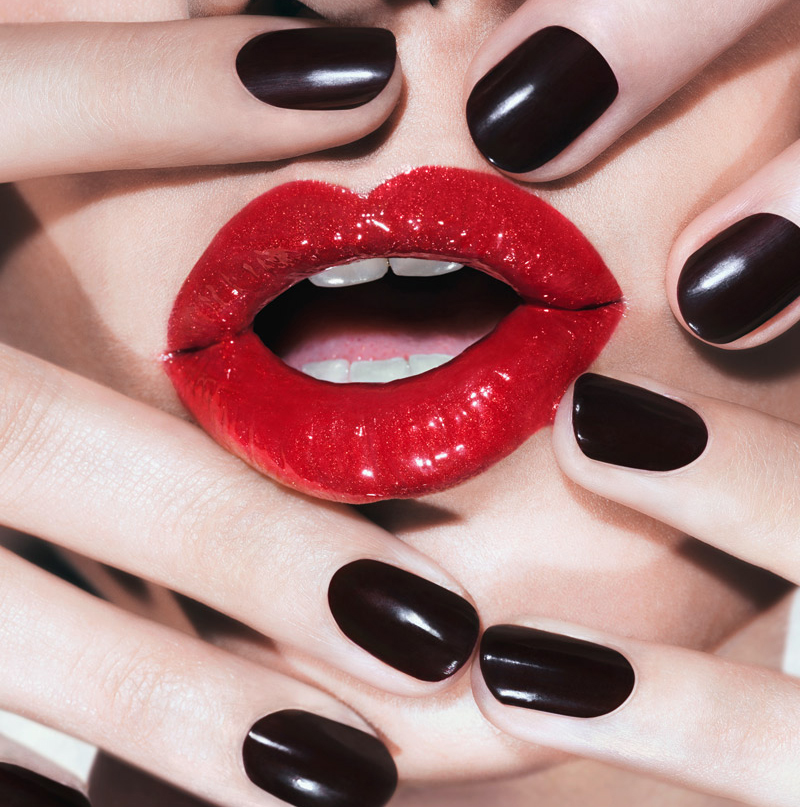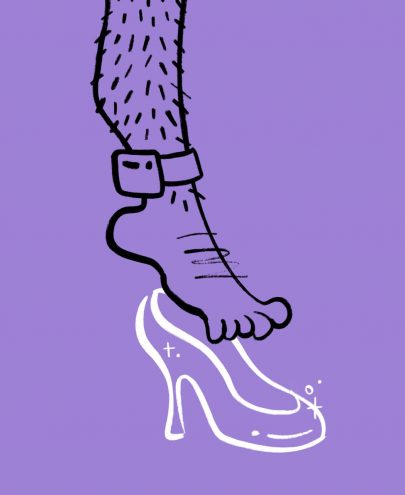Dec 11, 2013 etc

Are nail salons a luxurious oasis for a spot of harmless pampering, or part of an industry that exploits workers and harms customers?
This story first appeared in the November 2013 issue of Metro.
Auckland photographer Helen Bankers was an hour early for her ferry when she decided on a whim to treat herself to a pedicure in a nail bar in the Downtown mall across the road.
“I thought, ‘Why don’t I do something nice for myself and get my toes done?’” she says of the spur-of-the-moment treatment in mid-January. When the nail technician offered to wax her legs as well, Bankers thought, “Why not?”
Within three hours of being treated with hot wax dispensed from a roller-type device, she said, nasty red lumps appeared on her shins, which became redder, angrier and more sensitive as the night wore on. “I thought, Oh God, this isn’t good.” After three days, she went to a doctor, who prescribed seven days of antibiotics to treat her folliculitis — an infection of the hair follicles usually caused by staphylococcus bacteria.
When she telephoned the Downtown ProfessioNAIL salon to complain, they asked her to “come in and we’ll sort it out”.
“I said, ‘I don’t think you can sort it out and I don’t want you going near my legs again.’ I looked like a leper.” But she returned to the salon, where, she says, the staff “looked horrified” by the oozing pustules on her legs. They apologised and refunded the price of the waxing and her medical bills.
Nearly a year later, her shins are still slightly scarred and her once sanguine attitudes to beauty salons have hardened. “I’d heard the horror stories but I believed places had upped their standards. I was too naive.”
Her concerns echo those in the beauty industry about unhygienic practices in cheap, usually Asian-run nail bars, which have proliferated in shopping malls throughout the country in the past seven years. In Britain and the United States, the allegations are even more sinister, with the salons being linked to sex slavery, worker exploitation and emotional abuse.
In the US, 13 salon workers last year launched a national class-action lawsuit depicting the industry as the modern equivalent of a Dickensian factory, with their lawyer describing a “race to the bottom” as nail salon numbers exploded. In August, Britain’s Sunday Times magazine alleged nail salons were staffed by illegal immigrants from Vietnam who were victims of a “human trafficking network”.
In New Zealand, ProfessioNAIL is the country’s largest nail salon franchise, with about 25 shops nationwide, and is also largely a Vietnamese business — the company estimates 95 per cent of its New Zealand franchisees and their staff are Vietnamese. While there is no suggestion of similar practices here — complaints to the government’s labour service about ProfessioNAIL salons have largely concerned health and safety issues relating to chemical use rather than wages and immigration status — there are nonetheless concerns in the industry about some of their health and hygiene practices and pay rates.
One young nail technician who’s been here two years after training in Vietnam told us she was paid $7 an hour in cash when she arrived — well below the minimum legal wage — but this had increased to $10 as she became faster and more skilled, and staff also received bonuses from time to time. She had signed but not received a copy of her employment contract and did not receive pay slips, which while not mandatory, are recommended for employers.
She admitted equipment and tools weren’t always properly sterilised, saying technicians sometimes got too busy and didn’t have time, or simply forgot. “Our rule is that after each person, you have to put the tools in sanitising liquid for 15 minutes. Normally, if the manager can keep an eye on those staff, they will do it, but sometimes they forget. It depends on personality and habit.”
Greenlane Podiatry Clinic podiatrist Lisa Hinchcliff told Metro that after seeing a cluster of nail infections in a short time from one small ProfessioNAIL salon in Auckland a couple of years ago, she approached the store. “I asked if they sterilised. [The manager] said, ‘Yes, yes, thank you, thank you,’ and that was it.”
She still sees more than one patient a month who believes they’ve been infected at nail bars, and recommends clients buy their own set of tools they can take to a pedicure, including files, nippers and scissors, which cost about $55.
While fungal infections are endemic in the community — Hinchcliff estimates up to one in three adults may have them at any time — the clients she sees have often developed them for the first time after their pedicures. Fungal infections thrive when polish covers the nail — the fungus is anaerobic and doesn’t like oxygen — and often appear when the polish comes off the nail for the first time after the treatment.
ProfessioNAIL’s international management says customers with nail infections shouldn’t be treated, but the worker we spoke to said “it depends how serious it is. We don’t cut the cuticle off. But we still give them a pedicure. I serve quite a lot of customers who have infection — I can see it.”
Issues of patient complaints and infections are worrying the company internationally, if a newsletter to staff last year by ProfessioNAIL’s California-based CEO, Phuoc Le, is any guide. “Our company has received many emails from our clients saying that they will never return to ProfessioNAIL salons because their complaints were not satisfactorily dealt with.” The newsletter then went on to explain how to deal with unhappy clients, and discussed the causes of nail infections.
Nail bars have been one of the few luxury services that have emerged largely unscathed from economic downturns. “In the recession, you couldn’t afford to go out and buy new clothes and shoes so the next step to make yourself feel good is to get your nails done,” says Amber McIver of Parnell’s Verdo salon. “But the industry has been bastardised by Asian nail salons. There’s no care taken and a lack of education.”
McIver has been one of the industry specialists involved in consultations with the Auckland Council on health and hygiene bylaws, coming into effect next July, which will bring around 700 previously unregistered premises — including massage parlours, acupuncture clinics, beauty salons and tattooists — under the same regulatory regime. Only about 160 premises in Auckland that do manicures and pedicures are currently licensed.
Before the Auckland Council amalgamation, bylaws lacked consistency, with some areas requiring health and hygiene inspections and registration for nail salons, for example, but others, including Manukau, not.
If salons are held to the letter of the new bylaws, council officials admit, about half of them would be forced to close, but pragmatism will likely reign, with operators having plenty of notice of the coming changes, and time to raise their game after the new rules come in.
The bylaws require operators to explain the risks of infection to customers having services that break the skin, including manicures, pedicures, waxing, threading, plucking and exfoliation, and to advise on “precautions and post-service procedures”.
Given a number of the staff of Asian nail bars can speak only the most rudimentary English, this seems a big ask. So, too, do the training requirements (by recognised providers or five consecutive years’ service), with many technicians, particularly those in the cheaper nail bars, trained informally on the job.
Language barriers mean there’s often little communication between client and operator. The ProfessioNAIL technician we interviewed says she’s heard some salons fined workers who spoke Vietnamese in front of customers. “We communicate in Vietnamese — we have to because our English is not very good — but we’re not supposed to speak it when treating customers.”
The bylaws will also require anyone having a manicure or pedicure to have their hands and feet swabbed with an antiseptic before the procedure, and for operators to ensure pedicure basins are disinfected between customers. Any skin broken during a manicure or pedicure can’t be treated further, and no one who has cuts or abrasions on their hands or feet can be treated.
McIver says the commonest problem practice in cheap nail bars is technicians cutting nail cuticles which protect the nail bed, rather than using an applied product that “eats away” at only dead skin. “They’re cutting live skin, people are bleeding, and that’s where you can get transfer of blood-related diseases.”
The nail bars also typically remove acrylic nails by levering them off with another acrylic tip, which damages the natural nails, rather than soaking them in acetone. Drills, commonly used to roughen the surface before the application of acrylic nails, can also be dangerous and even go right through the nail plate. Aggressive filing causes painful red ridges on the nails, known in the industry as “rings of fire”.
Another problem is the use of Credo blades to shave rough spots on the feet — minor surgery that only podiatrists should perform. The blades are illegal in some states in America.
St Heliers woman Denise Lust had her heel badly cut in Everlast Nails, a Vietnamese-run nail bar in Eastridge shopping centre in Mission Bay, last autumn. Lust says she didn’t ask for the procedure, which shaves callouses and dead skin from the feet with a blade that looks like a potato peeler. “I felt — ouch — and then she went into a panic. I didn’t realise how bad it was.” She says the young technician, who could not speak good English, was “more upset than I was. She was wailing and in tears.”
The salon refunded her money and wadded her heel with plasters, but when she bled through them shortly after leaving, she hobbled to a medical centre at the mall where the wound was strapped. She had to get the cut dressed every week for several weeks, couldn’t put weight on her heel during that time, and later received accident compensation.
With an unregulated beauty industry, anyone can open a salon or nail bar. Last year, after complaints from viewers about the salons, TV3’s Target, using a hidden camera, exposed unhygienic practices at all three premises visited. These included sharing of files and buffing blocks, which can transfer fungal infections, warts, athlete’s foot or even hepatitis.
None was rated higher than 4.5 out of 10; ProfessioNAIL at Westfield St Lukes — one of the city’s biggest salons — scored just 1/10, with poor ratings for service and hygiene. Target’s expert adviser was nail stylist and educator Leah Light, who told Metro she sees clients weekly who’ve been cut and left bleeding after treatments from cheap nail bars. “We’re seeing everything from fungal infections, to damage to the nail bed, to trauma to the skin.” Management of ProfessioNAIL at Westfield St Lukes did not respond to Metro requests for an interview.
Light, who recently judged at the “Nailympics” in London and did Lorde’s nails before her Jools Holland television appearance, says some salons are “a disgrace that should be closed down”. After being contacted by Metro, Light put a message on her Facebook page asking about people who’d had bad experiences at nail bars.
Within a few hours, the post had 64 likes and 36 comments from women complaining of everything from infections and unsanitary practices, to pain and trauma to their nails. Donita Berryman, who works at Albany’s Caci Medispa, said her fingers were wiped with a cloth the technician had just used to clean the worktop surfaces. “I was speechless.”
Nail bars have previously been under scrutiny for using inferior and potentially lethal products on their clients. New Zealand banned the use of the potentially harmful solvent methyl methacrylate (MMA) — used to harden and bond acrylic nails — in July 2006 but four salons were subsequently found by the old Labour Department to still be using the product. In 2011, the Bay of Plenty Times reported nail technicians were still seeing clients on whom the product had been used.
MMA bonds the acrylic nails so tightly the customer’s actual nail can be pulled off with it. While MMA imports fell from 182,500kg in 2005 to less than 63,000kg in 2006, the year it was banned for nail use, the numbers quickly bounced back up, and last year 137,700kg came in. While MMA is still legally used in dentistry and orthopaedics, among other things, the figures suggest some salons may still be using it.
While the blood-borne infections associated with practices such as tattooing and piercing have gained a higher profile here, the Auckland Council’s senior project manager for implementing the new bylaws, Simon Hadlee, agrees issues such as fungal and viral infections are probably going unreported because “people can live with them”.
But the risk of serious complications is very real. In 2011, American podiatrist Dr Robert Spalding wrote the book Death by Pedicure: The Dirty Secret of Nail Salons after the deaths of two women from infections following pedicures.
Spalding claims three-quarters of American salons aren’t following their own disinfection protocols, using inferior products to reduce costs and not mixing their solutions or soaking their instruments properly. He says breaks in the skin can be microscopic but still let infection in, and many nail technicians who think their instruments are sterilised are wrong because “they have no clue” and aren’t properly trained.
Last year, ACC paid out nearly $6000 compensation for 52 accepted claims of accidents at nail bars and beauty salons, with the main injuries being “lacerations, punctures, stings and a few soft-tissue injuries”. Others included heel cuts from pedicure files and nail infections.
The Vietnamese domination of the international nail salon industry is no coincidence. The story started in 1975 when Hollywood actress Tippi Hedren (of Hitchcock’s The Birds fame) visited a Sacramento refugee camp. When the Vietnamese women there admired her nails, she sent her own manicurist every week to teach them, and then persuaded a nearby beauty school to complete their training and help them find jobs.
Their willingness to accept lower wages slashed the prices of a manicure from up to $60 to about $15. Now it’s estimated 80 per cent of Californian nail technicians are Vietnamese. These include the managers of ProfessioNAIL, the California-based company linked to the franchise in New Zealand.
While Companies Office records list Californian chief financial officer Trang Co Vuong as the sole director of ProfessioNAIL NZ Ltd, Vuong’s office referred Metro to Australasian director and general manager Jenny Vo for comment.
Vo and the company’s chief accounting adviser, Robert Tjong, who spoke to Metro on a visit to Auckland in late September, say they’re concerned about the image of the salon industry and are trying hard to raise standards. “We’re aiming to achieve a zero complaint level,” says Tjong. “We won’t get there, we understand that, but we’re trying.”
The company launched a complaints register about five years ago, and franchisees could have their licences cancelled if breaches are egregious or repeated. Vo and Tjong say their New Zealand franchise salons treat about 300,000 customers a year and attract only about 0.1 per cent of complaints, mostly about infections or service standards.
The operator in the Target case was advised to improve his standards. “We don’t kick them off straight away — we can’t; they’re family. They’re still family businesses,” says Tjong.
Of the technician who told us corners are sometimes cut because staff are too busy, Tjong says: “It’s not acceptable for owners to put pressure on employees that puts customers at risk. It’s wrong and won’t be tolerated.”
The franchisees are independently owned “mum and dad businesses”. Owners pay a monthly fee of several thousand dollars to use the ProfessioNAIL name, depending on the size and location of the salon. “It’s not a glamorous business,” says Tjong. “While the end product is quite glamorous, it’s not everyone’s cup of tea and that’s why the majority of our staff have fallen into the industry as friends and family.”
Vo and Tjong are aware of complaints that some salon owners have breached minimum wage or tax laws and say they’ve been trying to improve the quality of the operators they license. “We don’t want our brand brought into disrepute,” says Tjong. “Yes, there are going to be some rogue salons out there, no doubt about that, and there are going to be some that don’t adhere to our licence agreements or bother attending our training.”
They admit that after ProfessioNAIL opened here in 2004, it grew too fast. “We weren’t looking at the figures or locations properly, we just expanded,” says Tjong. No new salons are planned in the short term, with the market becoming increasingly saturated, keeping competition strong and prices down. They say a more regulated industry would help ensure operators observe the same minimum standards.
They acknowledge the communication requirement in the new bylaws may cause problems — although the staff training manual says Vietnamese mustn’t be spoken in front of customers — and they’re seeking advice about how best to meet the new rules.
Vo says staff are often too shy to try to communicate with their European customers but are nonetheless good at their jobs. “It’s from their heart. They know how to do it.”
Metro accompanied a council trainee environmental health inspector on two inspections of city nail bars and found that while the checks seem thorough — disinfectants and facilities are carefully examined and operators questioned about their routines and given advice — they don’t monitor a salon’s actual practice. Inspections are also flagged in advance, which would allow salons to prepare for the visit.
The council staffer, who preferred not to be named, told Metro that while inspectors have no specialist knowledge of best practice in nail technology, “a food inspector doesn’t need to be a chef. You just have to understand what the public health risks are and how those are combatted.”
David Milne, labour inspectorate northern manager for the Ministry of Business, Innovation and Employment, says ProfessioNAIL franchises nationwide have sparked 56 complaints involving worker health and safety issues since 2005 — not a particularly worrying number. Eleven related to employment issues such as holiday pay, but most concerned worker health and safety, for example around chemical smells.
Some of the complaints had come from customers, others from staff or neighbouring shops. The complaints were resolved by the franchisees agreeing to improve their practice, and none had been obstructive, says Milne. With most franchises separately owned, it’s difficult to consider joint action. He wants to identify problems in the sector, and target a joint operation involving a number of agencies, including immigration and the council.
He says while the number of complaints around pay and conditions is relatively low, the chances of complaints from a workforce of young women with poor English are “probably nil, to be honest with you. There could be immigration stuff behind the scenes — there’s a fear factor — and it might not be representative of the real problem. There might be exploitation there, but until we look into it further, we don’t know.”
For the nail technician we spoke to, a crackdown can’t come soon enough. “We come from a developing country; we don’t offer silver service. But the salons get high profits. They’re making a lot of money, but the staff aren’t seeing the benefits; the salaries are very low. They deserve to be paid more. I want it to be fair. Some are unfair.”
This story was first published in Metro, November 2013.





